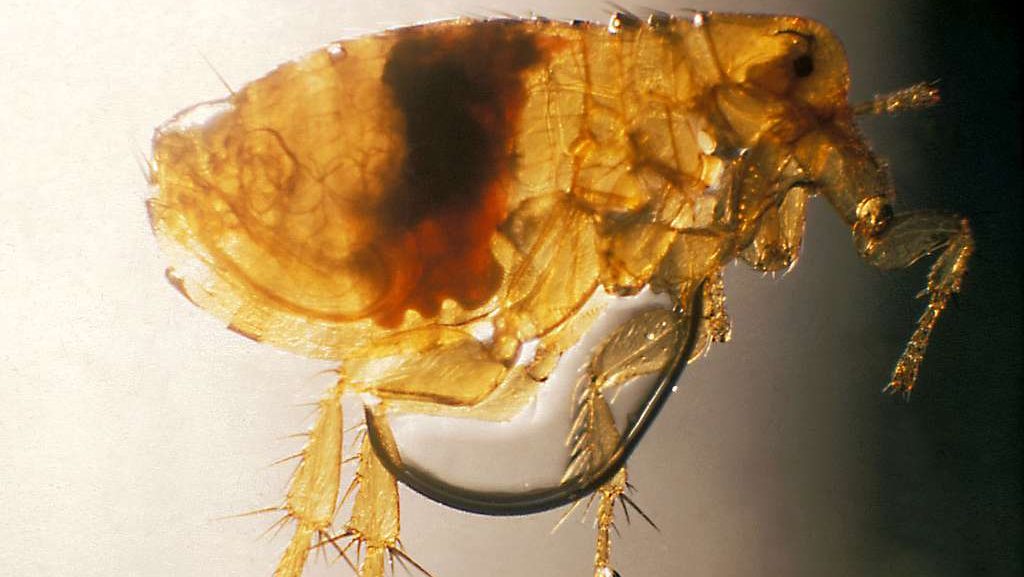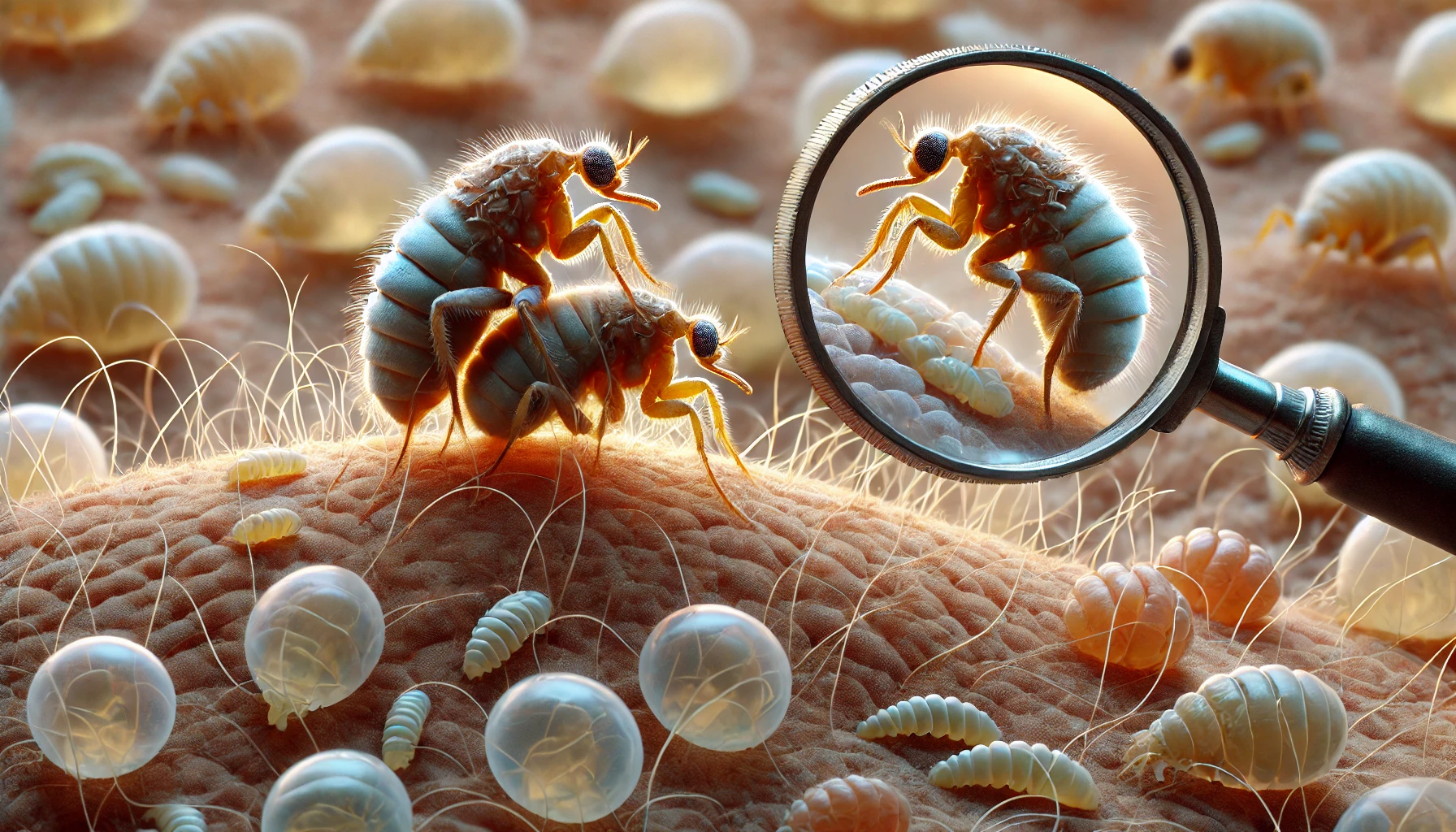Key Takeaways
- Fleas develop through egg, larva, pupa, and adult stages.
- Females can lay up to 50 eggs daily, causing rapid infestations.
- Vacuuming, washing pet bedding, and treatments help prevent fleas.
 Fleas are one of the most persistent pests due to their remarkable adaptability and rapid reproduction. Their life cycle includes several stages, each contributing to their survival and ability to infest homes, pets, and outdoor areas. Understanding how fleas develop, reproduce, and spread is essential for effective flea control.
This article covers the four stages of the flea life cycle, their reproduction habits, and key strategies to break the cycle and protect your home, pets, and family.
Fleas are one of the most persistent pests due to their remarkable adaptability and rapid reproduction. Their life cycle includes several stages, each contributing to their survival and ability to infest homes, pets, and outdoor areas. Understanding how fleas develop, reproduce, and spread is essential for effective flea control.
This article covers the four stages of the flea life cycle, their reproduction habits, and key strategies to break the cycle and protect your home, pets, and family.


Not getting a solution?
Get your free pest control estimate today!Flea Life Cycle
Fleas undergo a complete metamorphosis, progressing through four distinct stages: egg, larva, pupa, and adult. Below is a detailed breakdown of each stage: Egg Stage The flea lifecycle commences with the egg stage, where female fleas lay eggs after feeding on a host. Eggs are laid on pets, but they often fall into carpets, bedding, and upholstery, where they continue to develop.Physical Appearance
-
Shape: Oval-shaped with smooth, round edges.
-
Size: About 0.5 mm, similar to grains of salt.
-
Color: White or translucent, making them difficult to spot on light-colored fabrics.
 Larva Stage
Once the flea eggs hatch, they enter the larva stage, which is the most vulnerable stage in their lifecycle. Larvae avoid light and seek shelter in dark, hidden areas where they feed on organic material, such as flea dirt (flea feces) and dead skin cells.
Larva Stage
Once the flea eggs hatch, they enter the larva stage, which is the most vulnerable stage in their lifecycle. Larvae avoid light and seek shelter in dark, hidden areas where they feed on organic material, such as flea dirt (flea feces) and dead skin cells.
Physical Appearance
-
Shape: Long, worm-like, with no legs.
-
Size: Approximately 2-5 mm in length.
-
Color: White or translucent, making them difficult to see in carpets or cracks.
Physical Appearance
-
Shape: Enclosed within an oval cocoon.
-
Size: Similar to a flea larva, but the cocoon is slightly larger and thicker.
-
Color: Light brown or translucent, blending in with carpet fibers and soil.
Physical Appearance
-
Shape: Flat, narrow body with long hind legs for jumping.
-
Size: Ranges from 1.5 to 3.3 mm in length.
-
Color: Dark brown to reddish-brown, making them more visible on light-colored fur or fabric.
How Long Do Fleas Live?
Fleas live for 2 to 3 months on pets, feeding and reproducing continuously. In carpets and upholstery, adult fleas survive for weeks, while pupae can stay dormant for months in protective cocoons. Without a host, adult fleas last 1 to 2 weeks, but pupae remain dormant until they sense vibrations, heat, or carbon dioxide.
How Fast Do Fleas Reproduce?
Fleas are prolific breeders, making infestations difficult to control. Once on a host, fleas mate and begin laying eggs, with females capable of laying up to 50 eggs per day and around 2,000 eggs in their lifetime. These eggs often fall into carpets, bedding, and pet areas, continuing the cycle. Under ideal conditions, the entire flea lifecycle, from egg to adult, can be completed in around 21 days, allowing small infestations to grow rapidly if left untreated.How Many Eggs Do Fleas Lay?
Female fleas have the ability to lay up to 50 eggs/day, resulting in thousands of eggs over their lifetime. While eggs are initially laid on a host, they often fall off into the environment, such as carpets, bedding, and pet resting areas, where they continue to develop.How Long Do Fleas Live on Dogs?
Fleas can live on dogs for several months, feeding on blood and reproducing in the pet’s fur. The dog’s warm body provides an ideal environment for fleas to thrive, allowing them to complete their lifecycle directly on the host.
How Long Do Fleas Live on Humans?
Fleas do not live on humans for extended periods, as they prefer animal hosts. They may bite and stay on human skin for a few hours to a couple of days before moving on to a more suitable host, such as a dog or cat.How Long Can Fleas Survive Without a Host?
Adult fleas can survive 1 to 2 weeks without a host, but their survival depends on humidity and temperature. Pupae can stay dormant for months in protective cocoons, waiting for movement, heat, or carbon dioxide to signal a host. This ability to remain dormant makes it difficult to fully eliminate infestations without targeting all life stages.How Long Do Fleas Live in Carpet?
Fleas can live in carpets for several months, with eggs, larvae, and pupae developing in the fibers. Pupae can stay dormant for weeks or months, emerging when they sense movement or heat. Regular vacuuming and cleaning disrupt their lifecycle and reduce infestations.What Do Fleas Look Like in Carpets?
Fleas in carpets are usually in the egg, larva, or pupa stage. Eggs are tiny, white, and oval, while larvae look like small, white worms. Pupae are hidden in sticky cocoons that blend with carpet fibers. Flea dirt (black specks) may also indicate flea activity. Cleaning carpets thoroughly helps eliminate these hidden stages.
How to Prevent Flea Infestation?
Eliminating fleas requires targeting all four life stages i.e. egg, larva, pupa, and adult. A single treatment is rarely enough since pupae can remain dormant for months. Here are some usage of natural and chemical effective steps to break the flea cycle and prevent reinfestation:Prevention Tips
-
Clean and vacuum to remove flea eggs, larvae, and adults from carpets, furniture, and pet bedding.
-
Wash pet bedding and fabrics in hot water weekly to kill fleas at all life stages.
-
Treat pets with flea preventatives like topical solutions, flea collars, or oral medications recommended by a vet.
-
Apply flea sprays, powders, and IGRs to carpets, furniture, and outdoor areas to target all flea stages, including pupae.
Myths and Facts about Fleas
Many misconceptions about fleas can make infestations harder to control. Being aware of the truth behind these myths is essential for effective flea management. Here are some common flea myths debunked:| Myth | Fact |
|---|---|
| Fleas can live for months without a host. | Fleas typically survive for 1 to 2 weeks without a host. |
| Fleas only live on pets. | Fleas can also infest carpets, bedding, and furniture, where they lay eggs and develop. |
| Flea bites are not serious. | Flea bites can cause allergic reactions and even transmit diseases to humans and pets. |
| Fleas only bite animals. | Fleas can bite humans if animal hosts aren’t available, though they prefer animals. |
| Natural remedies are always enough to control fleas. | Professional pest control is often needed for large or persistent infestations. |





